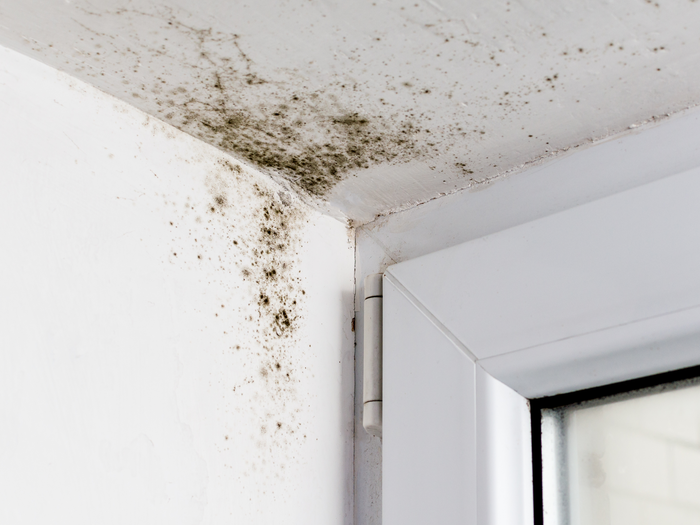
Indoor Mould: Recognizing the 5 Symptoms of Mould Exposure
Mould is a common natural element found both indoors and outdoors, but when it grows inside our living spaces, it can lead to various health issues. Mould exposure can be particularly concerning because its presence often goes unnoticed until symptoms arise. Recognizing the symptoms of mould exposure is crucial for maintaining a healthy indoor environment. In this article, we’ll delve into the five key symptoms of mould exposure, helping you understand when it’s time to take action to address indoor mould issues and safeguard your well-being.
1. Respiratory Issues
One of the most common symptoms of mould exposure is respiratory problems. Mould releases tiny spores into the air, which can be inhaled and trigger allergic reactions in sensitive individuals. If you notice an increase in coughing, sneezing, wheezing, or shortness of breath that is not attributed to a pre-existing medical condition, it might be a sign of mould-related respiratory irritation. Individuals with asthma, allergies, or compromised immune systems are particularly vulnerable to these effects.
2. Nasal and Eye Irritation
Mould spores can irritate the delicate membranes lining the nose and eyes. If you find yourself frequently experiencing a runny or stuffy nose, itching or watering eyes, or sinus congestion, mould exposure might be the cause. These symptoms can be mistaken for seasonal allergies, making it essential to consider the possibility of mould growth if they persist indoors.
3. Skin Irritation
Direct contact with mould or mould-infested materials can lead to skin irritation. Redness, itching, and rashes might develop after coming into contact with mouldy surfaces. Some moulds produce mycotoxins that can lead to more severe skin reactions. If you notice unexplained skin irritation, it’s worth investigating the presence of mould in your living spaces.
4. Fatigue and Cognitive Issues
Mould exposure has been linked to a range of neurological symptoms, including cognitive impairment and memory issues. Some individuals report feeling constantly tired or experiencing difficulty concentrating when exposed to mould. This “brain fog” can be attributed to mycotoxins produced by certain moulds. If you notice persistent fatigue or cognitive problems without an obvious cause, it’s important to consider the indoor air quality of your home as a potential factor.
5. Allergic Reactions
For those with mould allergies, exposure to mould spores can trigger allergic reactions that mimic seasonal allergies. These reactions might include sneezing, runny nose, itchy eyes, and skin irritation. However, mould allergies can also lead to more severe symptoms, such as difficulty breathing and chest tightness. It’s crucial to differentiate between mould allergies and other causes of allergies to properly address the issue.
Taking Action Against Mould Exposure
If you suspect that mould exposure is causing any of these symptoms, taking action to address the issue is paramount for your health and well-being. Here are steps you can take:
- Identify and Eliminate the Source: Conduct a thorough inspection of your home to locate areas with visible mould growth or water damage. Address the source of moisture, as mould thrives in damp environments. Once the source is eliminated, the mould growth will diminish.
- Professional Mould Inspection: In cases of extensive mould growth or if you’re unsure of the extent of the issue, consider hiring a professional mould inspector. These experts can identify hidden mould and assess the severity of the problem.
- Proper Cleaning: If you’re dealing with a small area of mould growth (less than about 10 square feet), you can attempt to clean it yourself using appropriate cleaning solutions and protective gear. However, it’s crucial to follow safety guidelines to avoid further exposure.
- Improve Ventilation: Proper ventilation is key to preventing mould growth. Ensure that your home has adequate ventilation in areas prone to moisture, such as bathrooms, kitchens, and basements. A ventilation system extracts stale air from the house, improves air flow, and maintain humidity levels inside the house which discourages mould growth.
- Repair Water Leaks: Promptly repair any leaks in your home, whether it’s a leaking roof, plumbing issue, or damaged appliance. Addressing leaks prevents the moisture that moulds need to grow.
Conclusion
Recognizing the symptoms of mould exposure is essential for protecting your health and ensuring the safety of your living environment. Mould-related symptoms can range from mild respiratory irritation to more severe neurological effects.
If you suspect that mould exposure is causing any of these symptoms, take proactive steps to address the issue. Identify and eliminate the source of mould, improve ventilation, and maintain proper humidity levels. If the problem is extensive or you’re uncertain about the extent of mould growth, consider seeking professional assistance. By being aware of the symptoms and taking appropriate action, you can create a healthier living space and minimize the potential risks associated with indoor mould exposure.







